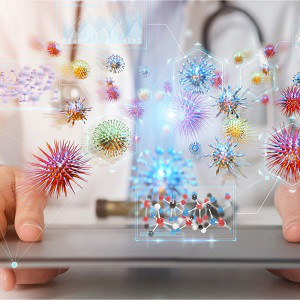
Nano bacteria are considered highly controversial in science.
Nano bacteria were discovered in cell cultures in 1994 and are also known as ultra-microbacteria.
Scientists are still debating whether they are coccoid bacteria with their own metabolism and a size of 80 nm to 600 nm or lifeless calcium carbonate particles that look similar to bacteria.
Nanobacteria, if they really exist, would be the smallest bacteria to date and have structures that have also been found in meteorites. This could make them one of the oldest forms of life on earth.
The localisation of antibodies against the particles in hyperlipidemic mice with atherosclerosis indicates that nanoparticles are a by-product rather than a trigger for the inflammatory process.
324 kHz -325 kHz Nanobacteria:
Infectivity category: 2.
They are as big as a virus, but they grow like bacteria.
In their environment they store calcium like a coral from the sea.
If they settle on the inner wall of the blood vessels, calcification occurs and the blood vessels become narrow.
At such sites, the blood clots easily, so the body reacts and covers it with cholesterol.
The nanobacterium of the inner layer of the vascular wall with endothelium, called endothelin (1-3), produces a biologically very active vasoconstrictor which, when released, causes local and systemic vasoconstriction and can thus cause persistent high blood pressure.
In addition, nanobacteria also play a role in kidney and bladder formation and can also cause tartar build-up.
Nanobacterium grows slowly but is resistant to antibiotics, so frequency therapy is of great importance.
After treatment, the patient needs recurrent monitoring.
The infection is asymptomatic and can only be detected after decades.
Monthly controls are necessary.
The natural intestinal flora, on the other hand, seems to offer some protection. Mycoplasma and human T-lymphocytes support multiplication by reducing the body's response.
Common resonances:
375-381
560-568
